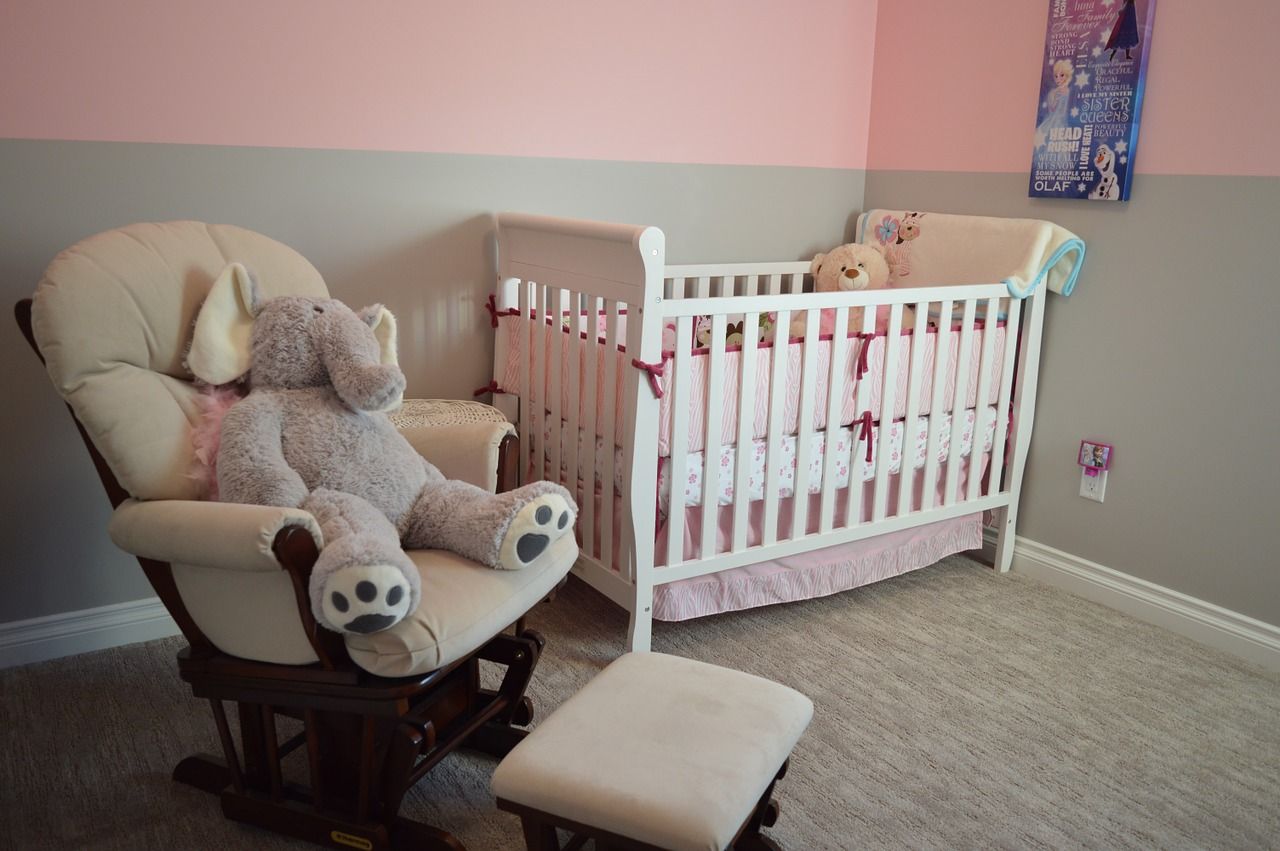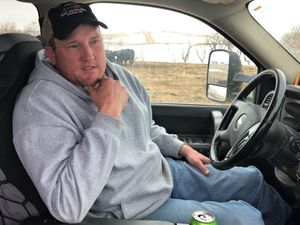South Dakota infants are dying in their sleep at a rate far higher than the national average and above neighboring states, but new efforts are underway to save babies from a cause of death that health experts say is mostly preventable.
From 2013 to 2017, more than 70 percent of infant deaths that occurred after hospital discharge in South Dakota were due to sleep-related causes, according to the state Department of Health.
The mortality rate for South Dakota infants from 2013 to 2015 due to a range of sleep-related causes was 157.3 deaths per 100,000 live births, 46th worst in the nation. Under a new, broader cause of death called Sudden Unexpected Infant Death, the South Dakota mortality rate is 43 percent higher than the national average of 89.2 and the highest among seven Great Plains states. SUID deaths all occur during sleep and include those from Sudden Infant Death Syndrome, accidental suffocation and strangulation and causes that cannot be determined.
Infant mortality due to sleep-related causes remains problematic despite extensive public education and media campaigns to prevent it. The number of American infants dying during sleep dropped dramatically in the 1990s when parents were educated through the “Back to Sleep” health campaign to place babies on their backs at bedtime, opening their airways, reducing the chances of suffocation or choking and allowing a baby to cry and awaken a caregiver if in peril.
Since 1999, however, the SUID death rate has leveled off, according to the Centers for Disease Control and Prevention.
In response, national and state health officials – including in South Dakota — have recently energized efforts to reduce sleep-related infant deaths. Data collection and analysis have increased; education programs are expanding for parents; and programs provide government-funded cribs that are safer for infants. Updated health recommendations include not allowing babies to sleep with a parent, placing babies on firm sleep surfaces and removing loose clothing, blankets or toys that can block airways. A new method called co-sleeping, in which a baby sleeps separate from a parent but within earshot, is being promoted.
Meanwhile, a tribal health agency in South Dakota recently received a multi-million dollar, 5-year grant to reduce the high infant mortality rate among Native Americans, including promotion of safe sleeping practices.
“People need to be aware that the problem hasn’t gone away,” said Bonny Specker, an epidemiology professor and director of the E.A. Martin Nutrition Program at South Dakota State University.
“For a while, these deaths really decreased significantly, and then I think everyone said, ‘OK, put them to sleep on their back and problem solved.’ But it’s obviously not solved because there’s still infants dying.”

Sleep-related deaths a nagging concern
From 2013 to 2017 in South Dakota, 396 babies died within a year of being born, of which 95 died from sleep-related causes after being discharged from the hospital.
State records show that overall infant mortality rates in South Dakota have been fairly steady or declining slightly in recent years and have remained close to the national average. Despite the slow decline, however, the 2017 rate jumped to 7.75 deaths per 1,000 live births, the highest in six years and third-highest since 2004, putting South Dakota at 41st worst in the nation that year.
Yet the mortality data also show that sleep-related accidents remain a significant cause of infant deaths in South Dakota.
Birth defects and premature births have long been the biggest causes of infant mortality in South Dakota and across the country, followed by sleep-related accidents and Sudden Infant Death Syndrome. The new classification of sleep-related deaths, SUID, includes SIDS and accidental deaths.
State data show that in the 5-year period from 2013-2017, birth defects caused 24.2 percent of infant deaths in South Dakota, followed by premature births (15.9 percent), accidents (11.1 percent) and SIDS (8.6 percent.) The accident category is dominated by suffocation or breathing restriction during sleep.
In terms of hard numbers, the South Dakota Infant Death Review from 2013-2017 shows that 61,245 babies were born in South Dakota, of which 396 died. Of those, 151 died after leaving the hospital, a period known as post-neonatal and which generally excludes birth defects or premature birth weight.
More than 70 percent of the 151 deaths after hospital discharge, 95 in all, were classified as sleep-related with bed-sharing the most common cause. Records show that 44 of the sleep-related deaths occurred in an adult bed, 19 in a crib and 12 on a couch with 20 locations undetermined.
State data also shed light on other trends surrounding infant deaths.
The infant mortality rate for children of mothers who use tobacco is 11.35 per 1,000 births, more than double the rate for non-users. The disparity is even greater when it comes to post-neonatal deaths that occur after the baby has left the hospital.
Some data also suggest that income level plays a role in infant mortality rates in South Dakota. Babies born to mothers who receive benefits from the federal Women, Infants and Children nutrition supplement program have a 30 percent higher mortality rate than those born to mothers not on the program, with the greater disparity again coming after babies are released from the hospital.
State and national data also show that infant mortality rates are higher among non-whites. According to the CDC, the highest infant mortality rate nationally in 2016 was among non-Hispanic blacks at 11.4 deaths per 1,000 live births. American Indian/Alaska Natives were next at 9.4, followed by Hawaiian/Pacific Islanders at 7.4, Hispanics at 5.0, non-Hispanic whites at 4.9 and Asians at 3.6.
South Dakota data generally follow that trend line. The American Indian infant mortality rate from 2013-17 (12.2) was about double that of white infants during that time frame (5.6).
Sleep-related infant deaths remain high in SD
This chart shows the rate of infant deaths per 100,000 live births at separate 3-year intervals over the past 25 years due to sleep-related causes including Sudden Infant Death Syndrome and accidental suffocation and strangulation. The rates across the country dropped dramatically from the early 1990s to the early 2000s due to an extensive safe sleeping public awareness campaign, but have not fallen as fast since then and have risen slightly in some states. The final category shows the change in the rate from 2002 to 2015, a period when public health campaigns tapered off. South Dakota’s most recent mortality rate (157.3) is 43 percent higher than the national average (89.2) and remains the highest in the Great Plains region.
Location 1990-92 2000-02 2013-15 % chg 2002-15
U.S. 150.3 94.5 89.2 – 5.7
Iowa 168.6 97.8 81.2 -17.0
Minn. 151.0 72.3 63.7 -12.0
Mont. 254.3 151.6 136.4 -10.0
Neb. 178.3 102.9 86.7 -15.7
N.D. 152.1 130.1 114.2 -12.2
S.D. 248.8 164.9 157.3 -4.6
Wyo. 303.8 100.4 86.6. -13.8
Source: American Academy of Pediatrics
Public health efforts expanding
The focus on improving infant health in South Dakota sharpened in 2011 after a task force formed by former First Lady Linda Daugaard released a report citing three main problem areas: tobacco use by parents, particularly mothers; a lack of prenatal care in the first trimester of pregnancy, and continued unsafe sleep practices.
One immediate response was creation of the South Dakota Cribs for Kids program within the Department of Health that provides a safe portable crib, sleep wear and educational materials to low-income parents.
The program gave out about 1,400 safe-sleep cribs and kits last year, said Katelyn Strasser, maternal child health epidemiologist within the state health department.
Strasser said other state efforts focus both on education and improving behaviors prior to and after births, providing education and support for new parents both through home visits and at health department offices across the state. Health workers push healthy lifestyles that include avoiding smoking and drug and alcohol use before and after pregnancy.
She said the understanding of causes of sleep-related deaths is steadily improving and leading to new education initiatives and recommendations.
“What we’re really finding throughout our data is that there are other safety factors beyond just putting infants being put on their backs,” she said.
As a result of the Daugaard task force report, the state intensified collection and analysis of data surrounding parenting and also after an infant death occurs. The state, and now some tribes, have implemented a Pregnancy Risk Assessment Monitoring System, or PRAMS, that surveys parents about behaviors and practices. The state also created the South Dakota Infant Death Review, which compiles a wide range of data to help spot trends and identify ways to improve infant health.
Parenting, however, remains a personal process often driven by cultural norms or familial traditions, sometimes making it difficult to change behaviors and improve infant safety, Strasser said.
For instances, the data show that parents are still sleeping or nursing with their babies in their bed and allowing stuffed animals, toys, bumper pads or loose blankets in cribs despite the inherent risk.
“Those are behavior modifications that can take a little time to change,” Strasser said. “In some cases, you’re not only trying to change the behavior of the parents, but also other caregivers like grandparents.”
Tips to improve infant sleep safety
These are the Level 1, or most important, recommendations from the American Academy of Pediatrics for parents to create a safe sleep environment for infants up to one year old. The full list can be found online here.
- Place infant on his or her back for every sleep.
- Use a firm sleep surface.
- Breastfeeding is recommended.
- Room-sharing with the infant on a separate sleep surface is recommended.
- Keep soft objects and loose bedding away from the infant’s sleep area.
- Consider offering a pacifier at nap time and bedtime.
- Avoid smoke exposure during pregnancy and after birth.
- Avoid alcohol and illicit drug use during pregnancy and after birth.
- Avoid overheating.
- Pregnant women should seek and obtain regular prenatal care.
- Infants should be immunized in accordance with AAP and CDC recommendations.
- Do not use home cardiorespiratory monitors as a strategy to reduce the risk of SIDS.
- Health care providers, staff in newborn nurseries and NICUs, and child care providers should endorse and model the SIDS risk-reduction recommendations from birth.
- Media and manufacturers should follow safe sleep guidelines in their messaging and advertising.
- Continue the “Safe to Sleep” campaign, focusing on ways to reduce the risk of all sleep-related infant deaths, including SIDS, suffocation, and other unintentional deaths.
- Pediatricians and other primary care providers should actively participate in this campaign.
Source: American Academy of Pediatrics
Native communities see higher death rates
While education and prevention programs seek to improve sleep safety for all infants in South Dakota, state and tribal officials are aware of unique challenges in the Native American community.
The main conclusion of the 2016 Infant Death Review prepared by the state health department states that, “South Dakota’s infant mortality rate can be improved by preventing accidental deaths. Prevention activities should be directed to those at highest risk: American Indian infants and infants who sleep in unsafe settings.”
While the overall infant mortality rate in the country is highest among African Americans, CDC data show that the rate of deaths due to sleep-related SUID causes is highest for American Indian/Alaska Natives among all racial and ethnic groups.
The national SUID rate for the American Indian population from 2013 to 2016 was 206 deaths per 100,000 live births, compared to 181 for black infants, 85 for whites, 52 for Hispanics and 34 for Asians.
A wide range of economic, social and environmental challenges facing Native communities in South Dakota all play a role in the high infant mortality rate, said Linda Littlefield, a social work and public health specialist with the Great Plains Tribal Chairmen’s Health Board who is program manager for the federal Northern Plains Healthy Start Program
Littlefield said the disparity between infant death rates among Native Americans compared to other populations is troubling to public health officials.
She said research increasingly shows that the disparity in Native American health is due to “social determinants of health,” which include widespread poverty and a lack of access to transportation, healthy food, affordable housing, education and familial and community support.
Littlefield and others also point to historical trauma – including the horrors of the boarding school era — and isolation suffered by Native peoples as weakening a culture that considers infants and children sacred and places a high value on self-protection within communities.
“We’re seeing improvements in infant mortality, statewide and nationally, but the disparity is a bigger issue, a more troublesome issue,” Littlefield said. “If you’re living on a reservation in South Dakota, you are probably dealing with deficiencies in every single one of the social determinants of health.”
Nurses and health officials within the tribal chairman’s health board, which serves 18 tribes and Native groups in four Great Plains states, are aware that different approaches are needed to reach and teach Native men and women about positive pre-natal habits and to prevent infant mortality, including through safe-sleep practices.
“We recognize that approaches that apply in white communities might not apply or work in Native communities,” she said.
One example: Natives who have suffered historical trauma and displacement do not respond well to being told what to do or how to live, even regarding the dangers of sharing a bed with a baby, Littlefield said. A recent state report showed that only 22 percent of Native American infants are always placed in their own crib or bed compared to 42 percent of white infants.
“My program teaches every participant about the correct sleep behaviors because it’s an important issue,” she said. “But there can be resistance in the Native community, culturally, because Native women want to sleep with their babies and there is a want to be close to their babies.”
Littlefield said she and her colleagues sometimes work with clients who are poor, have little access to transportation or may live with many family members in a confined area. She said her team takes a respectful, informative approach to providing education and intervention.
“It’s a difficult challenge and we have to continue to work on that,” she said.
Littlefield was notified this month that the tribal chairman’s health agency has been awarded a 5-year federal Healthy Start grant that will provide about $1.1 million a year to reduce infant mortality in its service area. The grant supports an evidence-based health model that will target both pre-natal and post-natal care. Services may include case management, health education, parental training, referrals to local services and home health visits for income-qualifying clients. The grant will also allow for provision of car seats, diapers and cribs designed to allow for safe sleeping by infants.
Littlefield said she is gratified to work in a field where education and intervention can help save lives.
“Sleep deaths are some of the most preventable deaths,” Littlefield said. “It’s probably one of the most significant areas where our efforts can have an impact.”





